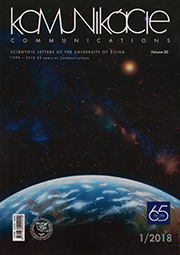Electrochemical Characterization of High-Performance Sulfur Composites as Cathodes for Li-S Batteries with Application in Automotive Industry
Electrochemical Characterization of High-Performance Sulfur Composites as Cathodes for Li-S Batteries with Application in Automotive Industry
Author(s): Andrea Strakova Fedorkova, Katarina Gavalierova, Dominika Capkova, Tomas KazdaSubject(s): Business Economy / Management, Energy and Environmental Studies
Published by: Žilinská univerzita v Žilině
Keywords: lithium; sulfur; batteries; polypyrrole; conductivity;
Summary/Abstract: Lithium-sulfur batteries are based on principle of conversion and their properties are very promising for their high theoretical energy density and low cost. However, current electrodes and materials used in Li-S batteries suffer from irreversible electrochemical reaction of polysulfides, low conductivity and stability. Here we summarize preparation and characterization of sulfur samples with polymer additive polypyrrole/polyethylene glycol to improve conductivity and stability of Li-S batteries. We also discuss very simple preparation technique of polypyrrole suitable also for industrial production. The electrochemical properties of sulfur-carbon-polypyrrole (S-C-PPy) composites were investigated by cyclic voltammetry (CV), electrochemical impedance spectroscopy (EIS) and galvanostatic charge/discharge measurements. Properties of resulting composite samples (especially conductivity) are strongly affected by the preparation technique and conditions. Insulating polymer PEG was used to improve the polymeric structure and mechanical robustness of PPy chain. Porosity of composite sample increase with increasing amount of PPy. On the other hand conductivity is reduced with increased porosity. Electrochemical measurements confirmed that addition of PEG can improve conductivity also in the presence of higher amounts of PPy in the sample. PPy-PEG composite polymer decrease particle to particle contact resistance. Co-polymer coating consisting of PPy-PEG significantly decreases the charge transfer resistance of prepared samples what was confirmed by impedance measurements.
Journal: Komunikácie - vedecké listy Žilinskej univerzity v Žiline
- Issue Year: 20/2018
- Issue No: 1
- Page Range: 82-85
- Page Count: 4
- Language: English

